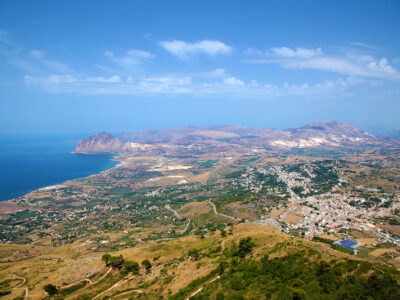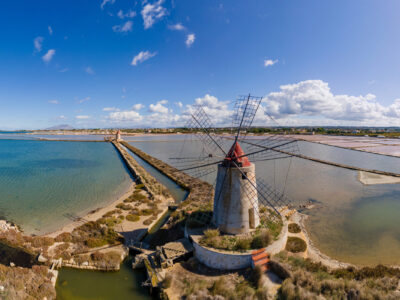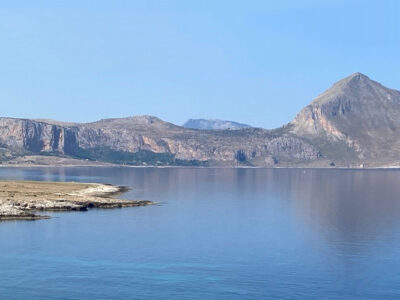The existence of the Church of St. John is traced back by local historians to the 14th century (1339), but probably the first building dates back to the 12th century; it underwent some restorations in the 15th century, between 1430 and 1436, renovated and expanded in the 17th century (1631) and decorated with stuccoes on the altars in the 18th century.
In the scenic background of mount Cofano, between sky and sea, the high dome rises up, located at the intersection of the single nave of the church with the transept: the oldest entrance (eastwards) is marked by an ogival portal (14th century), with multiple archivolts, decorated with zig-zag elements and fronted by an original staircase.
The church, today used as an auditorium, keeps inside some valuable works of Renaissance sculpture attributable to Gabriele di Battista from Lombardy, Antonino Gagini and his workshop. The most famous of the Gaginis, Antonello, was the sculptor of the elegant statue of San Giovanni Evangelista (St. John the Evangelist, 1531), placed at the right transept, in the base of which are depicted, in relief, the martyrdom of the Saint and a person praying, perhaps the client.
There are also displayed the remains of Medieval frescoes coming from the rocky church of Santa Maria Maddalena (St. Mary Magdelene); a further highlight is the decoration with stuccoes of the altars, made in the 18th century, in particular the altar of San Vito.






















